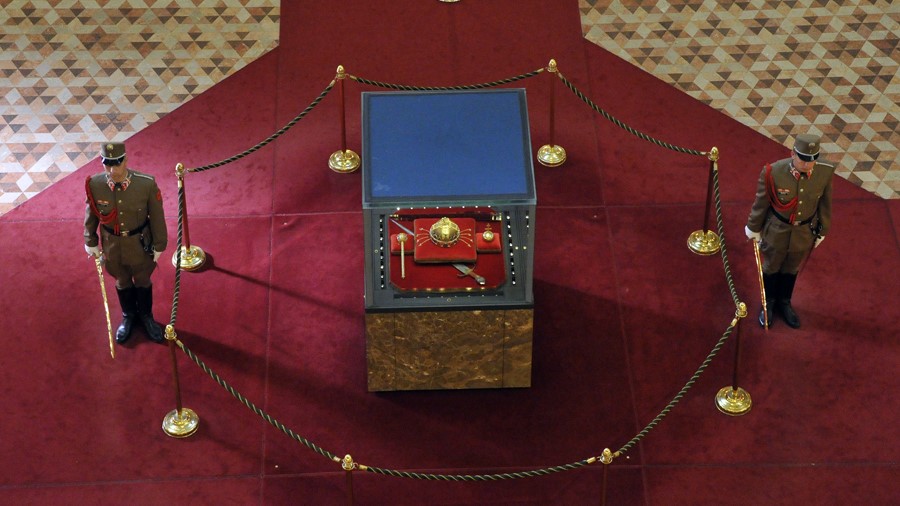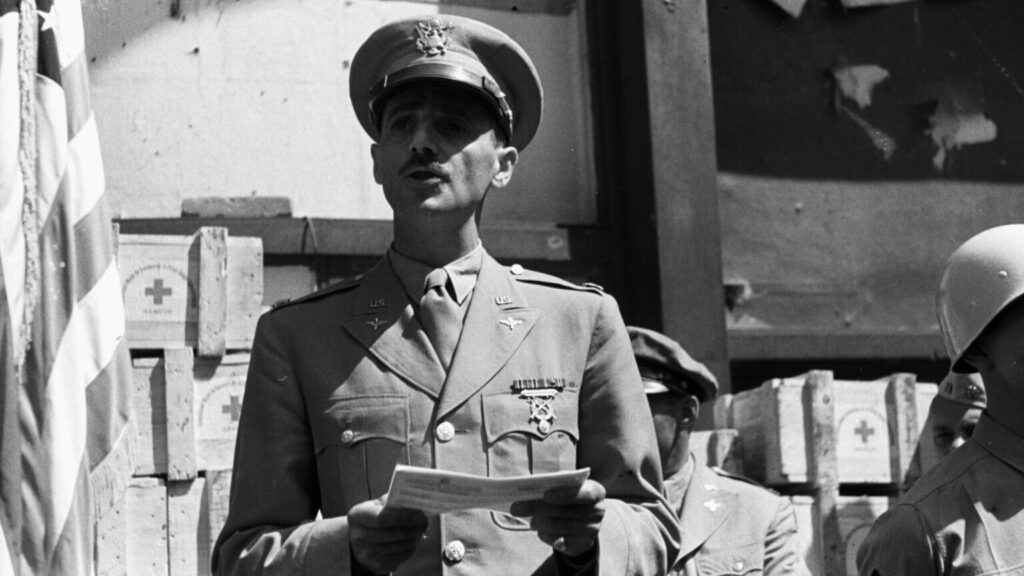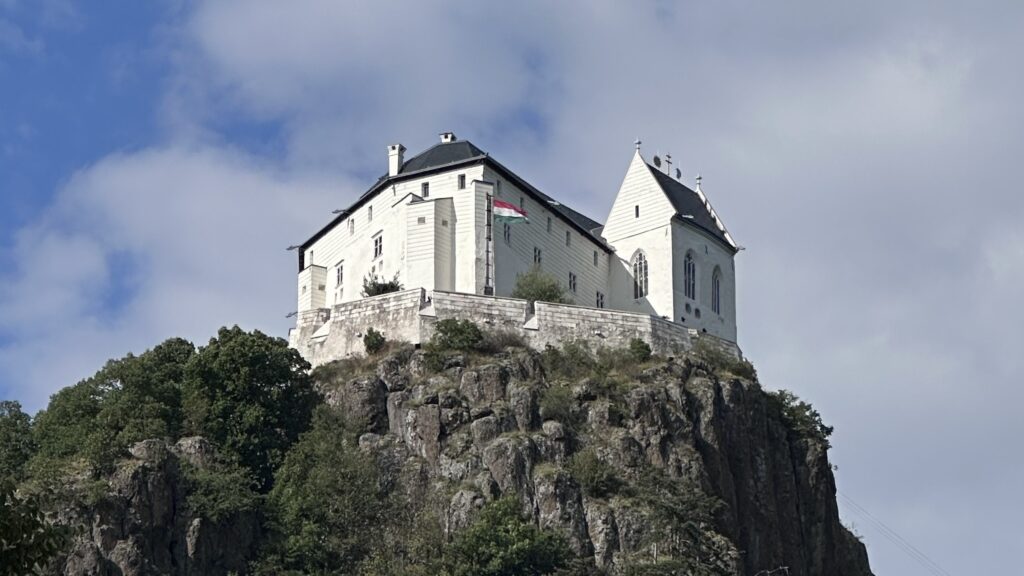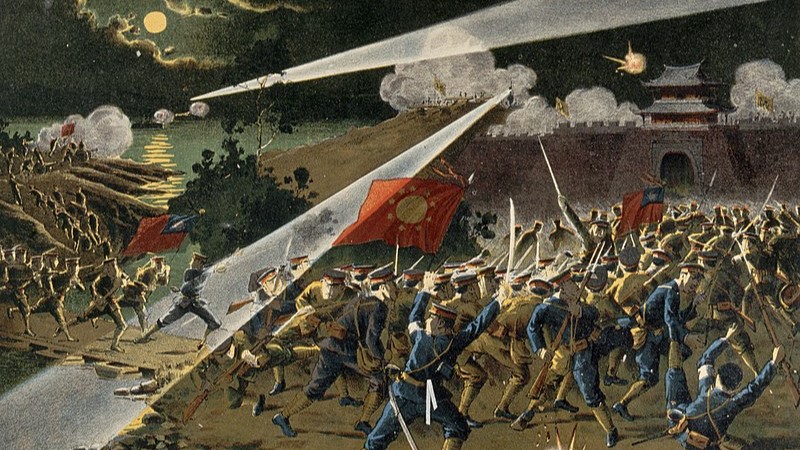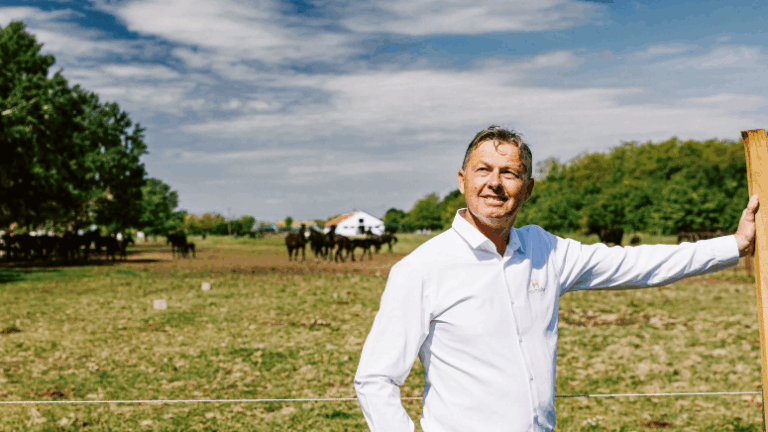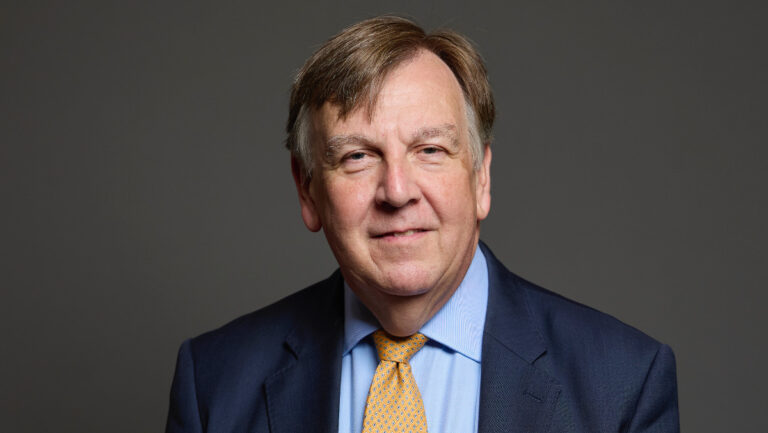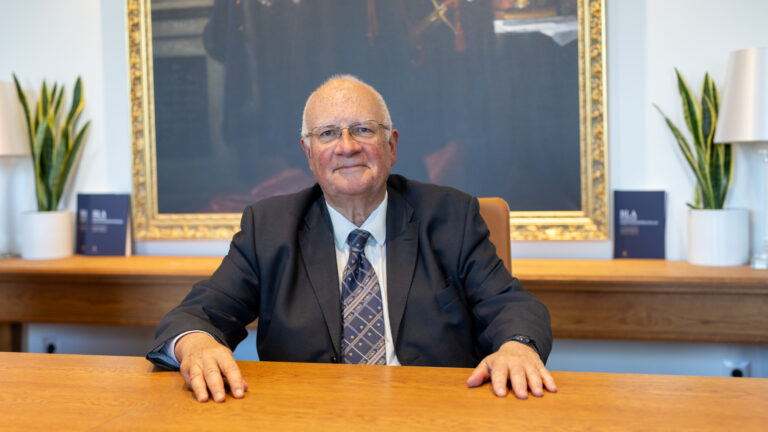US President Jimmy Carter returned the Holy Crown to Hungary in 1978. His recent passing makes the below interview peculiarly timely, and also serves as a tribute to the historical decision President Carter made.
The Holy Crown of Hungary has been a symbol and an embodiment of the State, of its sovereignty, and of its union with the Hungarian nation at least since the Middle Ages. Its outsized importance to the Hungarian State and nation and the many attempts throughout history by foreign rulers or rival claimants to take possession of it from its rightful holder led to the creation of units responsible for its protection as early as in the 13th century. Its final iteration, the Royal Hungarian Crown Guard, existed from the latter half of the 19th century until the end of WWII. Crown Guards were bound to the Crown with their lives, and were expected to be not only guardians, but also connoisseurs of the relic. It was this very dedication and heroism that, in the final years of the unit’s existence, saved the Crown from possible destruction by the Communists. The Crown Guard was officially restored in 2011 by the second Orbán government as an Army unit.
Colonel Barnabás Ádám was the commander of the Crown Guard of the Hungarian Defence Forces from 2011 to 2022. He is a former reconnaissance officer, the former commander of the 32nd Guard and Ceremonial Regiment of the HDF vitéz Sándor Szurmay Budapest Garrison Brigade, a retired Hussar Colonel, deputy director of the Szilvásvárad State Stud Farm, and a traditional Hussar. Col Ádám played a pivotal role in the restoration of the military Crown Guard. He spoke with Hungarian Conservative about the Guard, the Holy Crown and his experience as its the number one guardian.
***
Did the appointment as commander of the newly established Crown Guard ‘find you’, or did you apply for it?
In 1978, I was confirmed, and my blessing was: ‘Be faithful unto death, and I will give you the crown of life.’ (Revelation 2:10). At first, it might not be clear what I mean by this, but I firmly believe that this message carries significance.
The appointment in fact found me in 2010 when I ‘rode’ back to Hungary from Portugal. After that, I was assigned to the Intelligence Department of the Operations Directorate of the Hungarian Defence Forces General Staff at the Ministry of Defence. During this period, the Holy Crown Committee decided that the Hungarian Defence Forces should take over the guarding of the Hungarian Holy Crown from the Republic Guard Regiment of the Ministry of the Interior. At that time, the administrative state secretary was General Lajos Fodor, who had previously been the Chief of Staff of the Hungarian Defence Forces, and he established a working group, which I also joined.
To facilitate this, a working group was formed, and I became a member of it. Brigadier General István Kun Szabó—who was serving as a colonel at the time—was appointed as commander. He asked me if I would serve as his deputy, and I agreed. From that moment on, the connection between the Biblical quote ‘Be faithful unto death’ and my life became clear to me.
What were your impressions of the organization’s early years? How much did you consider the organization’s historical roots, internal norms, and unique traditions during its re-establishment?
When the organization began, the Hungarian Royal Crown Guard Association came into the picture, led by Imre Woth. The late founder of the association was vitéz Vitéz József, who served as a professional crown guard before and during World War II. The goal and intention of the association was for the Hungarian Defence Forces to reclaim the task of guarding the Holy Crown. We also received unique materials from the notes of Ferenc Takács, a former senior non-commissioned officer
(NCO). These notes detailed how the Crown Guards were trained for daily duty in the past, amounting, in total, to almost 1 terabyte of materials on Crown Guarding.
All information related to the spirit and history of the Crown Guard was provided by the Hungarian Royal Crown Guards Association. In close cooperation with them, we began the moral preparation and training of the Crown Guards, aiming to provide them with a clear understanding of their future duties and their significance. As part of the Guards’ theoretical preparation, we taught them about the Holy Crown itself, and about the legal history of the duty of guarding the Holy Crown, which goes back to the reign of King Matthias Corvinus. The first law on the Crown’s protection of 1464 is attributed to him.
The experience of the Holy Crown falling into foreign hands in the past, and the severe consequences that followed, taught King Matthias and the Hungarian nobility that protecting the Crown is of vital importance to the State. They realized that the Crown can only be safely guarded in a secure place and by reliable people, even if the institution of Crown guarding itself predates that law.
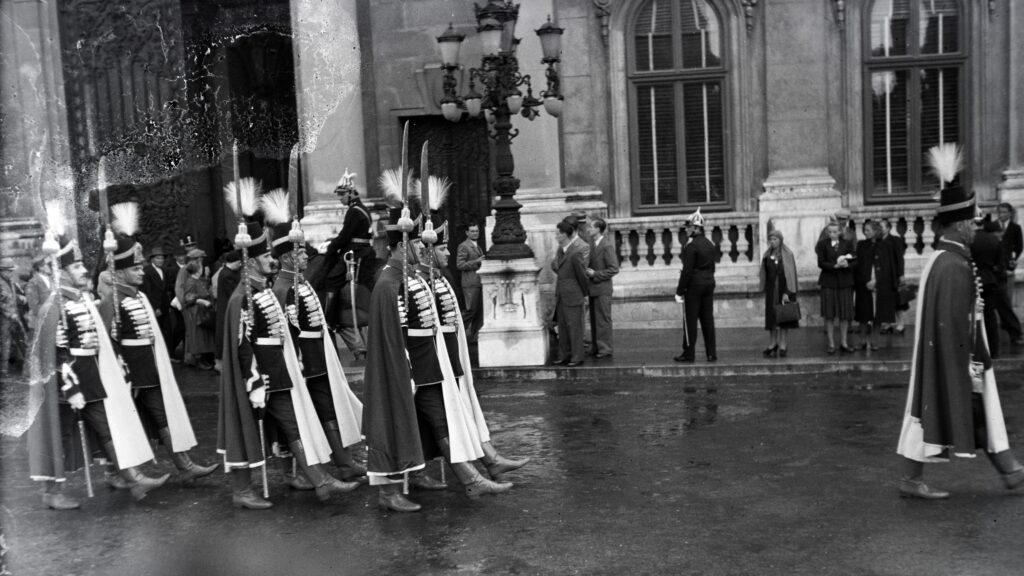
The president of the Hungarian Royal Crown Guards Association began teaching this history to the future Crown Guards. I myself learned about it alongside them as, unfortunately, such topics are not typically taught or given emphasis in primary schools, secondary schools, or even universities. The training was built on two main pillars: theoretical and practical education. The practical component focused on comprehensive guarding and protection, encompassing two primary areas from a military perspective. On the one hand, ceremonial guarding, or the honour guard itself, which serves as an expression of respect towards the Holy Crown. On the other hand, armed security, which ensures the dignity and safety of the Crown. Every soldiers of the Crown Guard has to be prepared to fulfil both roles.
Throughout the process, we received significant support from the Crown Guard Division of the Republican Guard (Editor’s note: The police units which, until the reestablishment of the Crown Guard in 2011, were responsible for guarding duties in the Parliament). From them we obtained particularly valuable information about the daily ‘routine’ of the Holy Crown. This is important because it remains largely unknown to the public that the Holy Crown follows a specific daily schedule.
Could you say a few words about the daily routine of the Holy Crown? I think many would find this fascinating.
The Holy Crown ‘wakes up’ every morning at 6 a.m. and ‘goes to rest’ at 10 p.m. This process follows a ceremonial order. Starting at 6 p.m., the Crown is surrounded only by the armed guard, and before it retires for the night, it is covered with a beautifully embroidered and ornate drape commissioned by the Speaker of the House. At 6 a.m., this drape is ceremonially removed with specific gestures and carefully folded. This process resembles the handling of a Catholic altar cloth.
In the morning hours, only the security guards are on duty. From 8 am, the Holy Crown receives visitors, and the ceremonial honour guard is also posted. The honour guard stands watch over the crown until 6 pm, the closing time, changing every hour. The guards change their position every 15 minutes in a special way: they turn to the left, towards the heart, instead of following the direction of the clock. The crown guards are armed with swords, not halberds[1].
A historically significant moment occurred on 30 May 2011, when we took over the full guarding and protective duties from the police. On this occasion, we also received an original halberd, which was once part of the equipment of the Hungarian Royal Crown Guard. This gesture symbolically marked the complete transfer of responsibility [to the new Crown Guard] for guarding the Holy Crown.
Did you consider reinstating the original uniform of the Royal Crown Guard for the newly established unit?
While the idea of restoring the historical Crown Guard uniform was considered, several practical obstacles made this difficult. The primary challenge was the disappearance of the domestic light industry infrastructure that existed during the Austro-Hungarian Monarchy. In early 2011, a three-member preparatory staff began work, which was later expanded. I joined it in March as deputy commander, responsible for training and general preparation. During the assessment of logistical needs, we realized that there were no artisans or manufacturers in Hungary capable of producing the original uniforms and decorative elements.
Even the members of the Hungarian Royal Crown Guards Association could only procure replicas of the original attire from Vienna, which proved to be a very costly solution. Moreover, time was pressing, as every Guard had to have the prescribed uniform by the end of March 2011.
Given the circumstances, we opted for a practical solution: we used the Tihany ceremonial uniform, the standard attire of the Hungarian Defence Forces’ honour guard, as a base. We then added unique decorations characteristic of the Crown Guards, including special arm patches, shoulder cords, chest decorations, and a cap badge featuring the Holy Crown instead of the national colours. This is how we created the attire that the guards still wear to this day.
When someone becomes a Crown Guard, do they need to take a special oath or pledge?
Of course. Crown Guards must take a special oath to the Holy Crown, which differs from the general military oath. Its text includes a commitment to protect the Holy Crown even at the cost of their own life. This oath is taken by every Crown Guard at the start of their service and serves as an initiation ceremony consisting of two main parts.
The law mandates that the Crown Guard oath must be taken on the same day the individual assumes their post. This internal oath is taken after successfully passing the theoretical exam and in the presence of the officer corps. We refer to this as the ‘internal oath.’ The commander finalizes the act by declaring, ‘I accept you as a Crown Guard.’ Afterward, the new crown guards are given a glass of non-alcoholic champagne to celebrate, and they are also consecrated with the halberd, marking the moment they officially become a member of the Crown Guard.
This event is complemented annually by the so-called external oath, which usually takes place on 15 August, the Feast of the Assumption, when King Saint Stephen offered the crown to Our Lady.
This is a ceremonial oath taken in the presence of the Holy Crown, in a solemn ceremony accompanied by the official anthem of the Crown Guard, with family members and other guests in attendance. At this point, the oath-taker is already officially on duty, but this serves as a reinforcement, a seal of the internal oath previously taken. Following this, a crown guard vigil is held at the Holy Crown starting at 7 PM, which the newcomers are required to attend.
How long does a Crown Guard’s appointment last? How often are the personnel refreshed?
Regarding the duration of service, we initially planned for each crown guard to serve a four-year term, as this is generally the maximum duration for a ceremonial guard. However, reality proved to be different. This gives us a unique insight into the workings of the Holy Crown. We used to say that ‘the Holy Crown selects,’ meaning it chooses who can stand beside it and who cannot, regardless of whether one has already taken the oath. There was a crown guard who lost 30 kilograms to become a guard but could only serve for a year, while others have been serving continuously since 2011. Therefore, the duration of service shows a completely unique pattern.
Being a crown guard is a unique mental burden. When a crown guard fully realizes the historical significance of his task, that he is entering history, and understands that he is standing beside the most important relic and symbol of the Hungarian nation, this situation begins to wear down the crown guards mentally, not physically. This is well illustrated by the phenomenon experienced during the maintenance of the storage: when the guards have to stand guard near the open storage, in the immediate vicinity of the Holy Crown, and the guards have to be changed every five minutes! The reactions are varied: some have trembling hands or stomachs, others burst into tears, or even enter a euphoric state. My experience is that the Holy Crown amplifies a person's personality traits.
This special effect becomes truly powerful when the guards thoroughly learn the history, symbolism, and significance of the Holy Crown. The knowledge comes with a heavy responsibility: the sole mission of the Crown Guard is to preserve this unparalleled national treasure in its original state and pass it on to the next generations.
Looking back on your time as commander, how do you evaluate the current direction of the Crown Guard unit?
I can only speak substantively about my command period from 1 August 2011 to 15 September 2022, but I can state one thing definitively: the unit is fully prepared in every aspect—weaponry, technical equipment, and training—to protect the Holy Crown and, if necessary, to safely evacuate it, even outside the Parliament building.
The crown guards receive comprehensive training: during their preparation, we placed great emphasis on marksmanship, ceremonial drill, tactical task execution, and field exercises. They regularly conducted formation shooting drills, as well as 40–50 kilometre marches on foot or several hundred kilometres of secured marches with their vehicles.
These latter drills had a special historical significance: they were modelled on the heroic deed of Hungarian Royal Colonel Ernő Pajtás, former commander of the Crown Guard, and his team who, at the end of the Second World War, saved the Holy Crown from the advancing Soviet troops by transporting it almost a thousand kilometres.
Overall, would you say that, in addition to its excellent technical readiness and training, the Crown Guard is a bit more than an average military unit? Does it have an additional cultural or even spiritual dimension?
The Crown Guard has a unique intellectual and institutional culture that fundamentally differs from traditional military service. The key distinction is that while a soldier's primary duty is to defend the nation, the Crown Guard's most important mission is specifically the protection and safeguarding of the Holy Crown. This also leads to another major difference: Crown Guards cannot be arbitrarily assigned to other tasks.
Of course, there have been exceptional situations, such as during the great flood of 2013, when, in addition to the personnel on guard duty, the remaining Crown Guards participated in flood defence efforts since every available hand was needed. Even under such extraordinary circumstances, however, the continuous protection of the Holy Crown had to be ensured. Crown Guards receive highly versatile and thorough training to fulfil their responsibilities. They deserve the utmost recognition for their dedicated service!
How has serving 11 years and 45 days as a Crown Guard Commander changed you? And can you share an experience where you personally felt the power of the Holy Crown?
When the Holy Crown was first taken out of its storage while I was present, and I saw it in all its reality, I felt an immense mental burden, a huge responsibility. Physically, it manifested as a churning in my stomach around my navel—which not only I, but others felt as well—and I also felt the weight of responsibility on my shoulders, which I had to live up to.
The Holy Crown taught me about sacrifice. It taught me that there is no such thing as putting others first. There is no family, no personal preferences, nothing else in the world; if any problem or issue arises, it must be solved immediately, I repeat, immediately, and cannot be postponed. If you don't, it's like a small part or screw falling out of a vehicle, which, if not repaired, will cause the entire vehicle to stop. So the service of the Holy Crown tolerates nothing, there is no such thing as having time for it later or taking care of it tomorrow. The Holy Crown encouraged me to become a slightly better person every day. As Sándor Bródy's epitaph says: ‘We must be priests, teachers, and soldiers in one person. To start anew every day and to end each day so that the next is better, cleaner, more beautiful.’ This is exactly the direction the Holy Crown pushes us in, to become a little better every day. I tried to pass this on to the crown guards and to implement it myself.
In the history of the Crown Guard, the required rank of the commander has always changed. At one time, it was a captain, later a major, and then during the Monarchy, it rose to the rank of colonel. Usually, cavalry officers, hussars, were selected as commanders of the Crown Guard. In the cavalry, as with shepherds, there is no night; when an animal is startled, you must act immediately. In the cavalry, you must be on standby day and night because of the horses, just as you must be with the Holy Crown. This was also an important impact of the Holy Crown on my life, the constant service.
Many things fall into place later in life, and then the whole picture becomes clear. For example, why did pastor Dr Bertalan Marschalkó say that confirmation verse to me then? I didn't know what to make of it for a long time. And when I became the commander of the Crown Guard, I looked back and understood... that was God's purpose for me.
What would you say to the future Crown Guards who will one day take on this special task?
The most important thing is to understand that guarding the Holy Crown is not just a responsibility but a vocation. I wish them to always preserve their respect and humility for it, because in doing so, they preserve the past of our nation and pass it on to the future.
Thank you for the interview.
Thank you.
[1] The traditional weapon of the Hungarian Royal Crown Guards, called ’vibárd’ in Hungarian.
Related articles:

